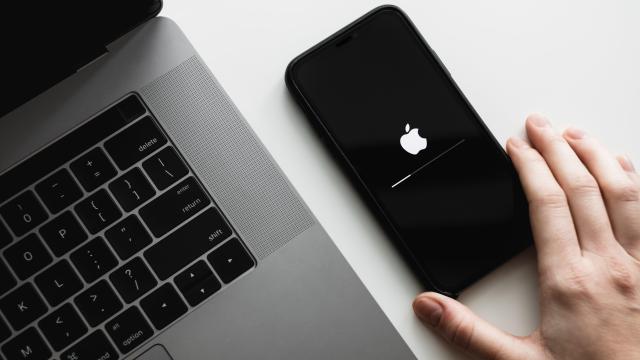If you rely on your iPhone’s “Automatic Updates” feature to download and install new versions of iOS for you, you’re going to be waiting a while for the next update. You might not notice until someone sends you an emoji you can’t see, or you’re taunted by that red pop-up in Settings, letting you know a new version is available. It begs the question: Why doesn’t your iPhone automatically install new updates as soon as Apple releases them?
On iPhone, a software update means more than just new features. Unlike other platforms, Apple doesn’t separate its feature updates from its security patches, rather combining them into one singular installation. That makes each new version of iOS important to download as soon as you can from a security perspective. For example, the last iOS update, iOS 15.5, introduced 27 patches for security vulnerabilities discovered in previous software versions.
Apple drops new software updates for compatible iPhones around the same time for everybody: In theory, you can install a new update as soon as it is released to the iOS community, but the Automatic Updates feature puts a delay on that.
Why Apple waits to install updates automatically on iPhone
It turns out, that’s on purpose. According to Craig Federighi, senior VP of software engineering at Apple, the company waits one to four weeks to roll out new updates to users who have Automatic Updates enabled. The idea here is to make sure there aren’t any glaring bugs in the software that would negatively affect the iPhones of millions of people. If such a bug was discovered, Apple could pull the plug on the update early, limiting the collateral damage and patching the bug to reissue the update later.
This strategy isn’t the only one employed to root out bugs, of course. Each version of iOS is first run through beta testing before the general public ever sees it. Beta testers, both developers and public testers, install the early version of the software on their devices, and report any issues back to Apple. Betas often go through multiple versions before release, as Apple works through the feedback from testers to improve the experience.
While beta testing is essential for developing any piece of general use software, the pool of testers isn’t large enough to find any and all major bugs. While everyone has the opportunity to download a new update manually when it becomes available, a large sector of the community simply won’t, either because they have Automatic Updates enabled, or because they don’t bother updating in the first place.
That gives Apple an opportunity to run an unofficial second round of “testing:” if everything goes smoothly after a week, the company begins rolling out the update to those with Automatic Updates turned on. That rollout ramps up as time goes on, resulting in 100% availability after four weeks.
The fastest way to install new iOS update on your iPhone
Unfortunately, there’s no way to bump up your place in the automatic line: whenever Apple decides to roll out the update to your device, that’s when it’ll update on its own. If you want to make sure your iPhone is fully updated at all times, you’ll have to check for new updates manually, and install them yourself. To do so, you can head to Settings > General > Software Updates.
If you are sticking with Automatic Updates, make sure both “Download iOS Updates” and “Install iOS Updates” are enabled under Settings > General > Software Updates > Automatic Updates. The former will only download new updates to your iPhone, but won’t actually install them until you do so yourself. In that case, it won’t matter when Apple rollout the automatic update to your iPhone — it’ll be waiting forever for you to act.

Leave a Reply
You must be logged in to post a comment.